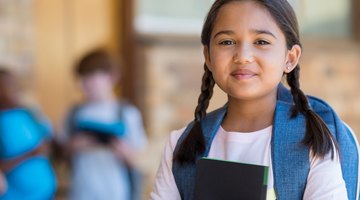What are Barriers to Effective Communication?
Teachers have an increasingly difficult job trying to communicate effectively to classrooms that are growing in size and may contain students or learners who come from varied backgrounds.
Some common barriers of communication in the classroom are listening barriers, perception barriers, oral barriers and cultural barriers. Other barriers are also common, like emotional barriers, physical barriers, psychological barriers, and barriers of self esteem.
These terms may go by different meanings in different contexts, but common language can be used to explain these barriers to different cultures. Learning to recognize and overcome these barriers and behaviors is essential in effective classroom communication in primary and secondary schools.
What are the Types of Barriers to Effective Communication in a Classroom?
- Listening Barriers
Effective listening and active listening is one of the most important factors in classroom communication, classroom activities and classroom interaction. Take the time to listen to what the other person is saying. When someone is speaking, you should not be thinking of your next response. Negative emotions may occur when certain words or body language is used.
A teacher must also take care to keep emotional reactions to a minimum and focus on what the speaker is saying. Outside noise such as telephones, email or construction noise can sometimes make listening difficult. This outside noise should be minimized in the classroom.
- Perception Barriers
Perception may be a barrier to effective communication in the classroom. Different people may receive and hear the same message but interpret it differently. Paying attention to detail is also important. Important aspects can be missed by not covering a subject in depth. A teacher should also learn to focus on both positive and negative aspects of a conversation. By having a distorted focus, a teacher may only focus on the negative aspects of a conversation.
- Oral Barriers
Communication barriers in the classroom may exist if oral communication is not clear. The communication process only occurs when the listener hears and understands your message in the way you meant for it to be received. Some problems in oral communications include using words with ambiguous meanings or having forms of language barriers. The teacher must make sure the students clearly understand the meanings of words. Many classrooms may use the English language and eye contact, which can sometimes act as a second language to convey meaning, to explain these barriers in common terms to multiple groups of students. Non-verbal cues and non-verbal messages may also be used to break these barriers in a classroom.
Another problem in oral communications is using generalizations and stereotypes. Classroom communication should be specific to the topic and without bias. A teacher must also take caution not to make a premature conclusion before she has all the facts about a topic or situation. Non-verbal communication can also be a part of oral barriers. Finally, a teacher must overcome any lack of self-confidence and deliver the message with assertiveness and clarity.
- Cultural Barriers
Cultural differences can be a barrier to effective communications and communication skills in the classroom. It is possible for both a teacher and a student to have predisposed ideas about behavior based on what the other person's culture is. Messages are often misunderstood if they are delivered in a way that is unfamiliar to the student's culture. It is important to dispel assumptions or biases based on cultural differences in a classroom.
Related Articles
References
Resources
Writer Bio
Janet Hunt has worked in the insurance industry for more than 15 years. Now serving in online marketing, she also has expertise in business and finance topics. Hunt received her Bachelor of Business Administration from the University of Phoenix. Hunt has also worked as a food services manager for a high school cafeteria and received her school nutrition certification in 2002.










